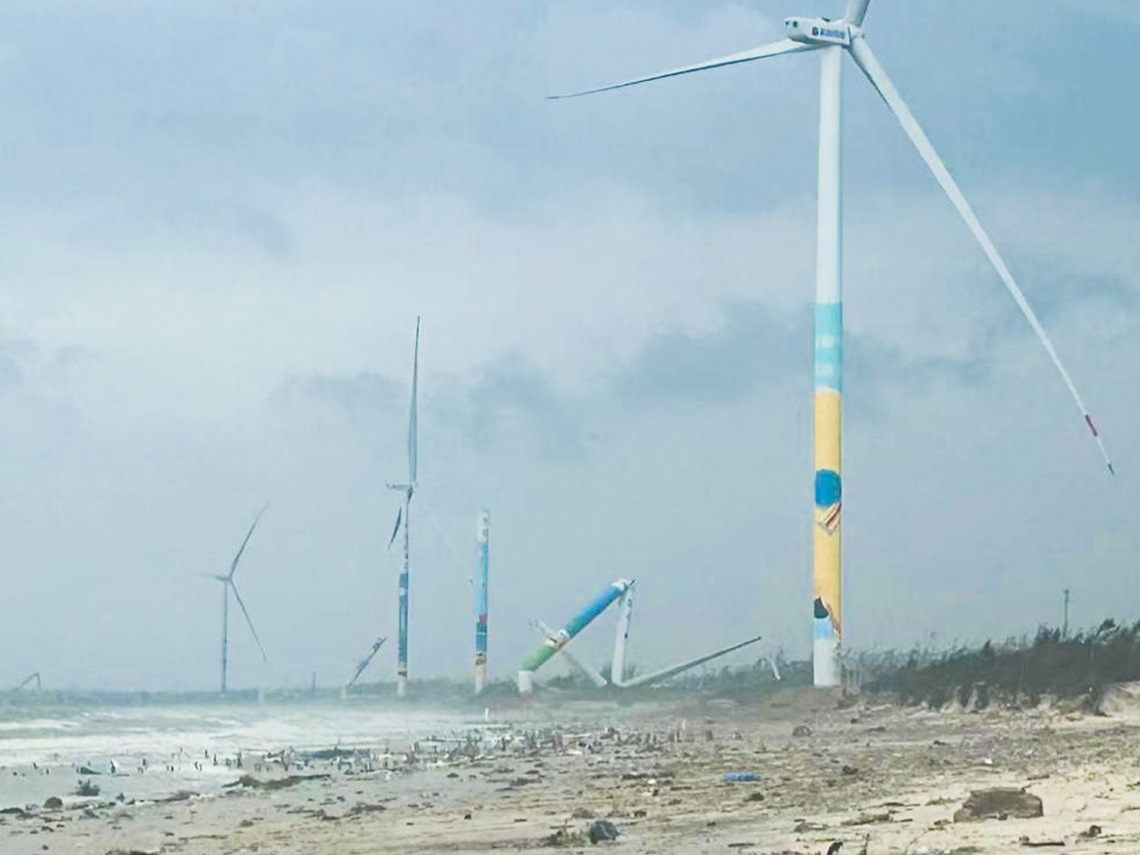A study conducted by Assistant Professor Yuntian Chen's team at Eastern Institute of Technology, Ningbo and collaborators reveals that over half of the operational and planned offshore wind farms across Asia and Europe are exposed to hazardous extreme wind conditions. The analysis indicates a significant increasing trend in extreme wind speeds, which critically influences turbine structural loads, across 68% of global coastal regions. The findings were published in Nature Communications on November 5th and featured as an Editors' Highlight.
In 2024, Typhoon Yagi made landfall in Wenchang, Hainan Province, causing the collapse of multiple wind turbines at a local farm and resulting in economic losses estimated at several hundred million Chinese Yuan. This event underscores the critical importance of scientifically evaluating the resilience of existing and planned wind farm infrastructure to extreme wind events.
Offshore wind power constitutes a fundamental component of the global transition to renewable energy sources. However, offshore wind farms are subjected to more complex and severe environmental loads compared to their onshore counterparts, including strong winds and massive waves. In the context of global warming, the observed intensification of tropical cyclones and heightened activity of extratropical cyclones in high-latitude regions present escalating risks to the operational reliability of offshore wind turbines.

Documentation of a wind farm in Wenchang, Hainan, in the aftermath of Typhoon Yagi. | Image provided by Weigang Tian
Wind turbine classification by the International Electrotechnical Commission is based on the fifty-year return period wind speed—an extreme wind speed with a statistically estimated return period of 50 years. Turbines must be designed to withstand the specific conditions of their deployment site. Accordingly, the design of maximum wind speeds for Class I, II, and III turbines are defined as 50.0 m/s, 42.5 m/s, and 37.5 m/s, respectively.
Utilizing hourly wind speed data spanning 1940–2023, the research team systematically analyzed spatiotemporal patterns over global oceanic domains. Integrating the geographical coordinates of wind farms, they assessed the associated extreme wind speed risks. The study finds that the 50-year recurrence wind speed exceeds the Class III turbine design threshold in 36.70% of the global ocean area. A significant upward trend in this parameter is observed across 68% of the oceanic regions analyzed. Within coastal zones (extending 100 km offshore), 16.49% of the area exceeds the Class III standard, while 11.25% and 0.62% surpass the Class II and Class I standards, respectively.
Analysis incorporating the locations of operational and planned wind farms demonstrates that in Europe and Asia, over 40% of sites are situated in regions where extreme wind speeds exceed the Class III design benchmark. Notably, for more than half of these sites, extreme wind speeds exhibit a continuing increasing trend, a pattern strongly correlated with changes in cyclone intensity under climate warming.
Professor Yuntian Chen and co-authors propose the integration of dynamic risk assessment mechanisms into wind turbine design standards. They advocate for the development and adoption of localized design specifications tailored to distinct climate zones, aiming to enhance turbine structural integrity and operational reliability during extreme weather events.
The research concludes that future strategies for wind farm siting and turbine class selection must rigorously incorporate long-term trends in regional extreme wind speeds. This is particularly critical in regions frequently impacted by tropical cyclones and high-latitude areas experiencing intensifying storm activities. This study provides a vital scientific foundation for ensuring the sustainable development of the global offshore wind industry.
Yanan Zhao, a Ph.D. candidate jointly supervised by Eastern Institute of Technology, Ningbo and The Hong Kong Polytechnic University, is the first author of the paper. The corresponding authors are Assistant Professor Yuntian Chen (Eastern Institute of Technology, Ningbo) and Professor Zhenzhong Zeng (Southern University of Science and Technology). Collaborators include Dr. Yiheng Tao (The World Bank) and Professor Jinyue Yan (The Hong Kong Polytechnic University).
Link: https://doi.org/10.1038/s41467-025-65105-3











